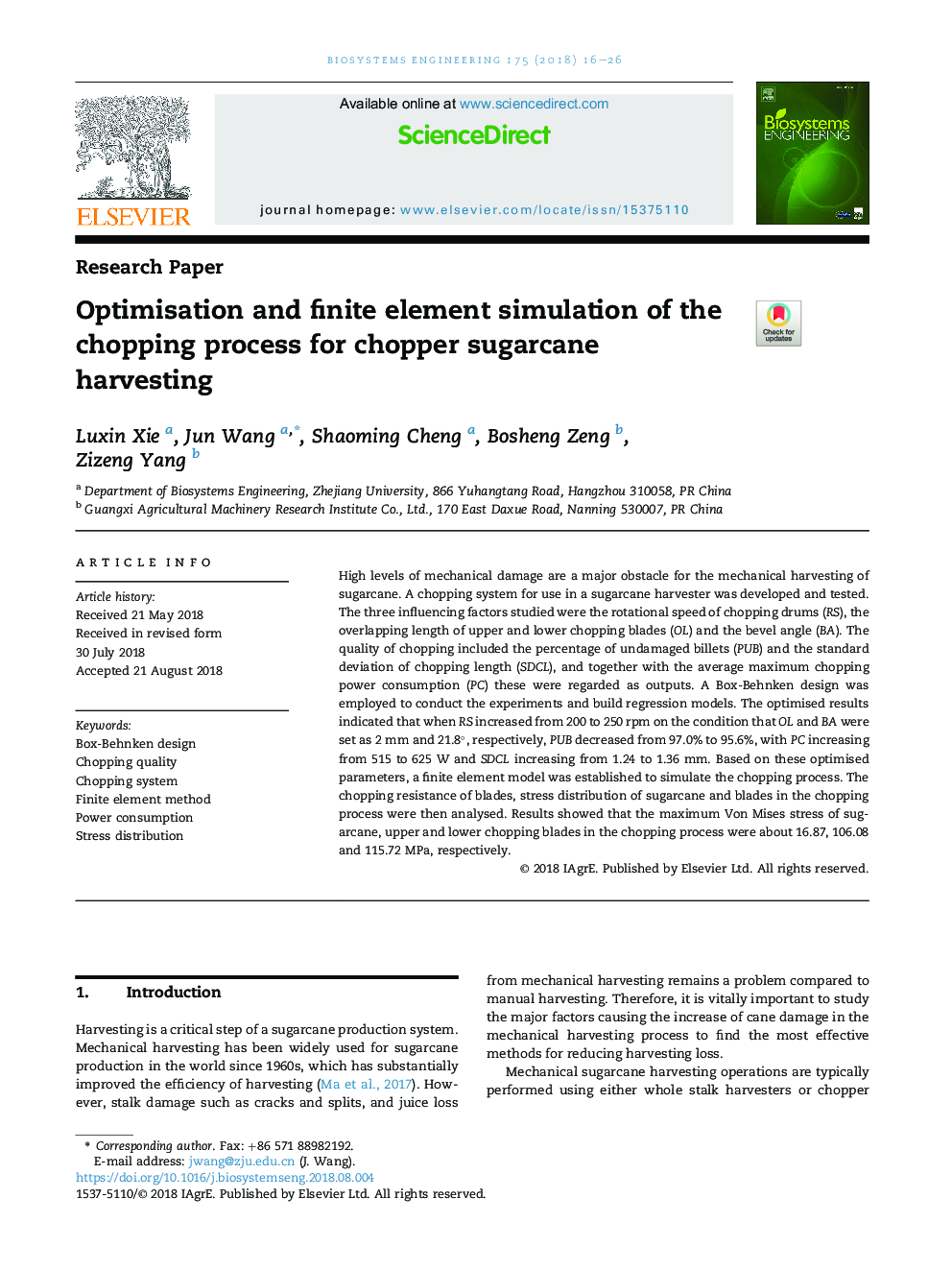| Article ID | Journal | Published Year | Pages | File Type |
|---|---|---|---|---|
| 8961657 | Biosystems Engineering | 2018 | 11 Pages |
Abstract
High levels of mechanical damage are a major obstacle for the mechanical harvesting of sugarcane. A chopping system for use in a sugarcane harvester was developed and tested. The three influencing factors studied were the rotational speed of chopping drums (RS), the overlapping length of upper and lower chopping blades (OL) and the bevel angle (BA). The quality of chopping included the percentage of undamaged billets (PUB) and the standard deviation of chopping length (SDCL), and together with the average maximum chopping power consumption (PC) these were regarded as outputs. A Box-Behnken design was employed to conduct the experiments and build regression models. The optimised results indicated that when RS increased from 200 to 250 rpm on the condition that OL and BA were set as 2 mm and 21.8°, respectively, PUB decreased from 97.0% to 95.6%, with PC increasing from 515 to 625 W and SDCL increasing from 1.24 to 1.36 mm. Based on these optimised parameters, a finite element model was established to simulate the chopping process. The chopping resistance of blades, stress distribution of sugarcane and blades in the chopping process were then analysed. Results showed that the maximum Von Mises stress of sugarcane, upper and lower chopping blades in the chopping process were about 16.87, 106.08 and 115.72 MPa, respectively.
Related Topics
Physical Sciences and Engineering
Engineering
Control and Systems Engineering
Authors
Luxin Xie, Jun Wang, Shaoming Cheng, Bosheng Zeng, Zizeng Yang,
